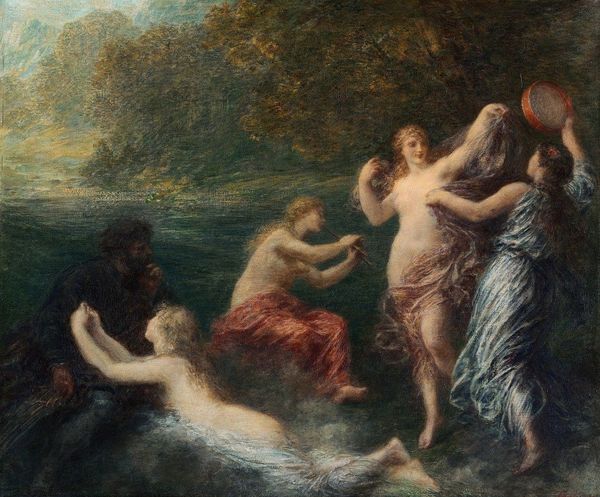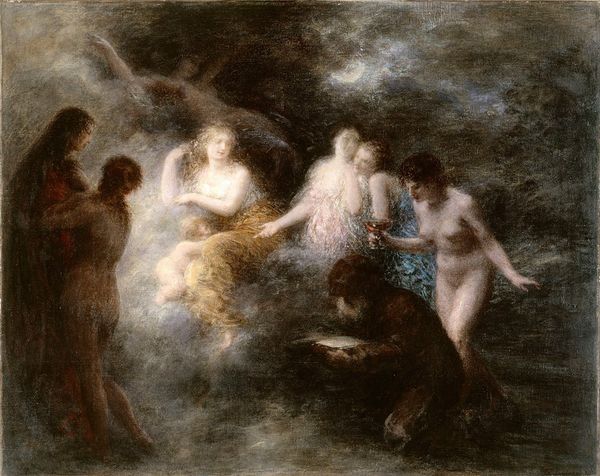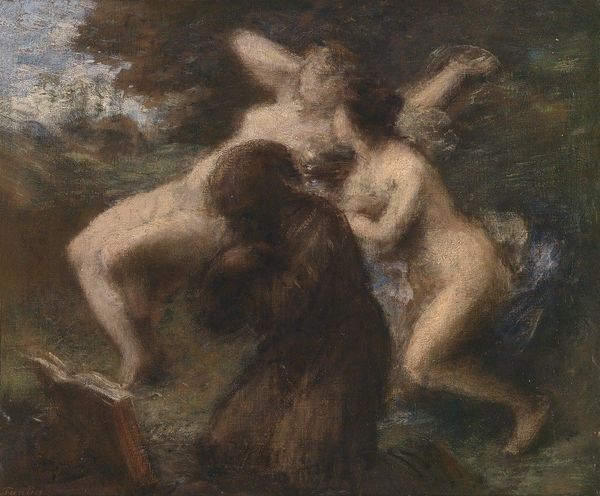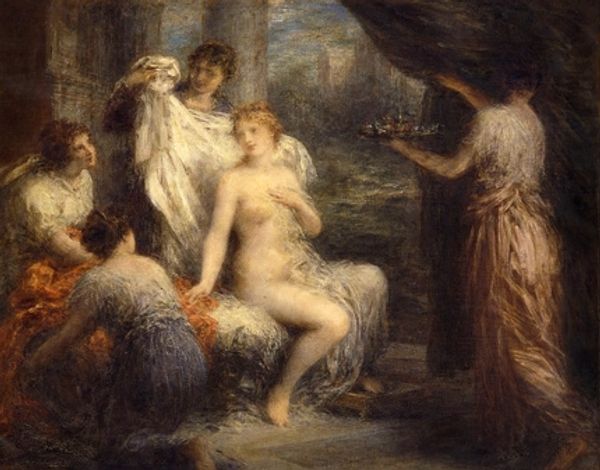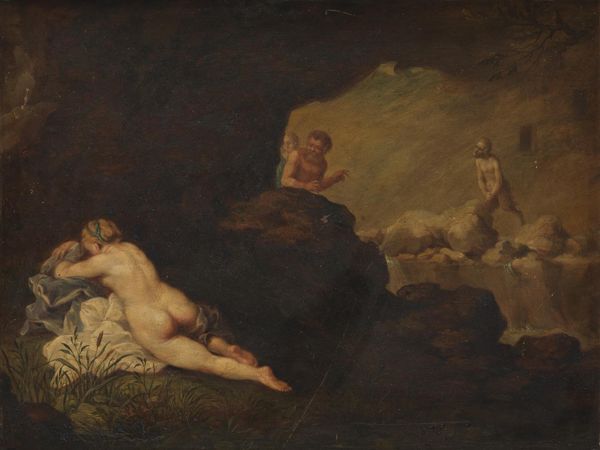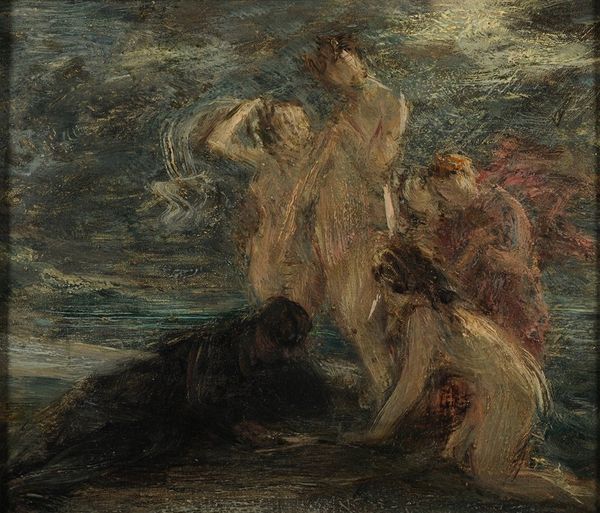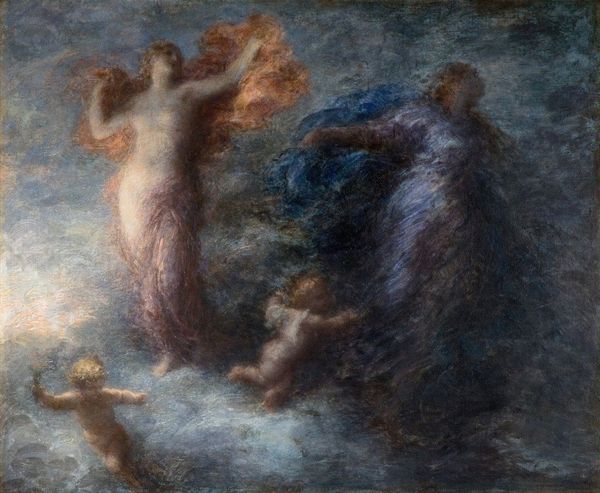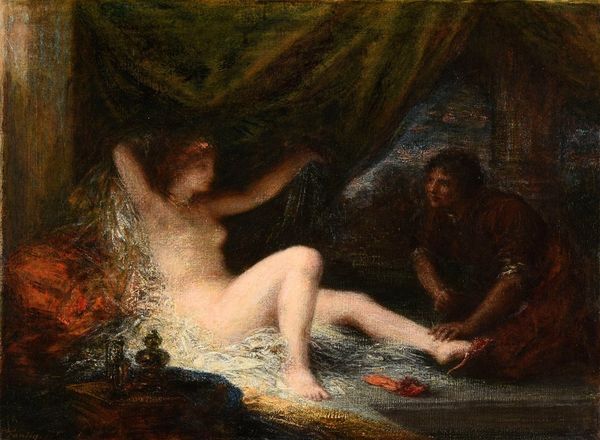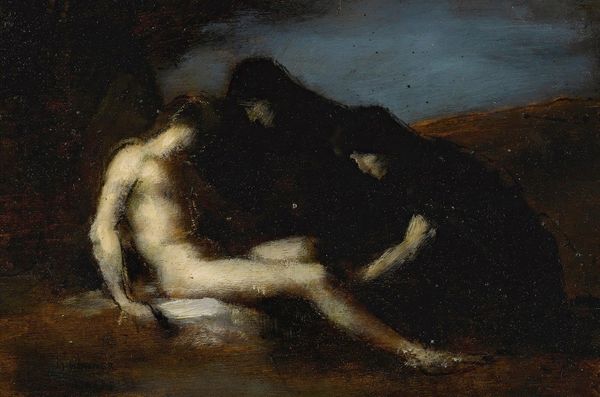
Copyright: Public Domain: Artvee
Editor: So, this is Henri Fantin-Latour’s “Hélène” from 1892. It looks like an oil painting. It’s a rather curious scene… the nude figure is captivating but the gathering crowd makes the image rather uneasy. How do you interpret this work? Curator: Fantin-Latour painted this "Hélène" at a fascinating moment in French history, following the Franco-Prussian War and during a period of national identity formation. Given this socio-political backdrop, how do you read the positioning of Hélène within a classical, perhaps even mythologized context? Editor: Hmm, I see what you mean. I guess, at first glance, it felt purely historical or mythological, but framed this way, it makes me think about how dominant narratives can idealize and perhaps even exploit figures, especially women. The crowd seems… judgmental, almost? Curator: Precisely. Hélène, a figure of legendary beauty, often blamed for the Trojan War, becomes a potent symbol. Think about how female beauty has been historically weaponized, turned into a tool of conflict and justification for male ambition. What does this suggest about the painting's engagement with contemporary social dynamics of the time? Editor: That's really interesting. I hadn't considered the layers of social commentary. It feels like a critique of the way society projects its desires and anxieties onto women. Is Fantin-Latour somehow pushing back against those narratives? Curator: It's possible. Fantin-Latour’s work often dances between admiration and critique, questioning the established codes of beauty and power. By painting Hélène surrounded, almost besieged, by figures in varying degrees of engagement, he's visualizing a discourse, a debate around female representation. This tension opens up new lines of inquiry, doesn’t it? Editor: It certainly does. I initially saw a historical painting, but now I see a complex engagement with identity, gender, and the enduring power of myth. Curator: Exactly, and that is why understanding art involves interrogating the assumptions that we have about history, identity, and gender.
Comments
No comments
Be the first to comment and join the conversation on the ultimate creative platform.
